United States
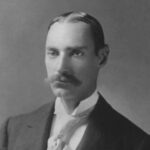
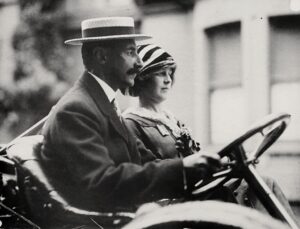 John Jacob Astor IV was born on July 13, 1864 at his parents’ country estate of Ferncliff in Rhinebeck, New York. He was the youngest of five children and only son of William Backhouse Astor Jr, a businessman, collector, and racehorse breeder/owner, and Caroline Webster “Lina” Schermerhorn, a Dutch-American socialite. His four elder sisters were Emily, Helen, Charlotte, and Caroline (“Carrie”). John Astor IV was an American business magnate, real estate developer, investor, writer, lieutenant colonel in the Spanish–American War. He came from a long line of the very prominent Astor family.
John Jacob Astor IV was born on July 13, 1864 at his parents’ country estate of Ferncliff in Rhinebeck, New York. He was the youngest of five children and only son of William Backhouse Astor Jr, a businessman, collector, and racehorse breeder/owner, and Caroline Webster “Lina” Schermerhorn, a Dutch-American socialite. His four elder sisters were Emily, Helen, Charlotte, and Caroline (“Carrie”). John Astor IV was an American business magnate, real estate developer, investor, writer, lieutenant colonel in the Spanish–American War. He came from a long line of the very prominent Astor family.
Astor’s was an accomplished writer, having published “A Journey in Other Worlds” (1894), a science-fiction novel about life in the year 2000 on the planets Saturn and Jupiter. He was also an inventor. He patented several inventions, including a bicycle brake in 1898, a “vibratory disintegrator” used to produce gas from peat moss, and a pneumatic road-improver, and he helped develop a turbine engine. He was a great visionary, and his contributions to the world were amazing. 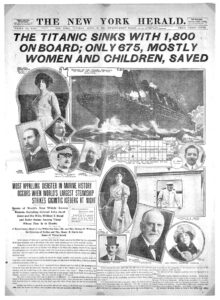
Astor married socialite Ava Lowle Willing on February 17, 1891. The couple had two children, William Vincent Astor (November 15, 1891 – February 3, 1959), businessman and philanthropist, and Ava Alice Muriel Astor (July 7, 1902 – July 19, 1956). The couple divorced in November 1909. Astor IV remarried shortly thereafter, compounding the scandal of his divorce. At the age of 47, Astor married 18-year-old socialite Madeleine Talmage Force, the sister of real estate businesswoman and socialite Katherine Emmons Force. Astor and Force were married in his mother’s ballroom at Beechwood, the family’s Newport, Rhode Island, mansion. There was also much controversy over their 29-year age difference. His son Vincent despised Force, yet he served as best man at his father’s wedding. The couple took an extended honeymoon in Europe and Egypt to wait for the gossip to calm down. Among the few Americans who did not spurn him at this time was Margaret Brown, later fictionalized as The Unsinkable Molly Brown. She accompanied the Astors to Egypt and France. After receiving a call to return to the United States, Brown accompanied the couple back home aboard RMS Titanic.
Astor IV died in the sinking of the RMS Titanic during the early hours of April 15, 1912. Astor was the richest passenger aboard the RMS Titanic and was thought to be among the richest people in the world at that time. He was also a true gentleman, who would never have been on a lifeboat without knowing that all the women and children were on lifeboats. Astor IV had a net worth of roughly $87 million when he died, which would be 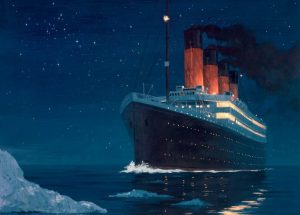
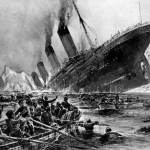 equivalent to $2.44 billion in 2021. Astor, like his predecessors also made millions in real estate. In 1897, Astor built the Astoria Hotel, “the world’s most luxurious hotel”, in New York City, adjoining the Waldorf Hotel owned by Astor’s cousin and rival, William. Later, the complex became known as the Waldorf-Astoria Hotel. The Waldorf-Astoria was the host location to the United States inquiries into the sinking of the RMS Titanic, on which Astor died.
equivalent to $2.44 billion in 2021. Astor, like his predecessors also made millions in real estate. In 1897, Astor built the Astoria Hotel, “the world’s most luxurious hotel”, in New York City, adjoining the Waldorf Hotel owned by Astor’s cousin and rival, William. Later, the complex became known as the Waldorf-Astoria Hotel. The Waldorf-Astoria was the host location to the United States inquiries into the sinking of the RMS Titanic, on which Astor died.
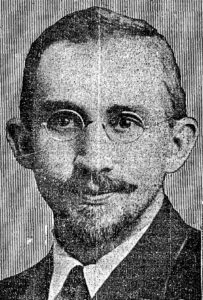 In any war, there must be a nation’s first casualty. World War I could be no different. On March 28, 1915, the first American citizen was killed in the eighth month of World War I. The United States didn’t even enter the war until April 6, 1917. Nevertheless, Leon Thrasher, who was a 31-year-old mining engineer and a native of Massachusetts, drowned when a German U-Boat, the U-28 torpedoed a cargo-passenger ship the British RMS Falaba, a West African steamship, on which Thrasher was a passenger. The sinking became known as “The Thrasher Incident.” The RMS Falaba was on its way from Liverpool to West Africa, off the coast of England. Of the 242 passengers and crew on board RMS Falaba, 104 drowned. Thrasher was employed on the Gold Coast in British West Africa, and on March 28, 1915, he was on the RMS Falaba, as a passenger, returning to his post, following a trip to England.
In any war, there must be a nation’s first casualty. World War I could be no different. On March 28, 1915, the first American citizen was killed in the eighth month of World War I. The United States didn’t even enter the war until April 6, 1917. Nevertheless, Leon Thrasher, who was a 31-year-old mining engineer and a native of Massachusetts, drowned when a German U-Boat, the U-28 torpedoed a cargo-passenger ship the British RMS Falaba, a West African steamship, on which Thrasher was a passenger. The sinking became known as “The Thrasher Incident.” The RMS Falaba was on its way from Liverpool to West Africa, off the coast of England. Of the 242 passengers and crew on board RMS Falaba, 104 drowned. Thrasher was employed on the Gold Coast in British West Africa, and on March 28, 1915, he was on the RMS Falaba, as a passenger, returning to his post, following a trip to England.
The sinking, brought with it a claim from the Germans that the submarine’s crew had 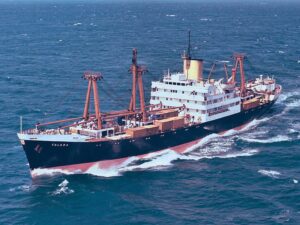 followed all protocol when approaching RMS Falaba. The Germans said that they gave the passengers ample time to abandon ship, and that they fired only when British torpedo destroyers began to approach to give aid to the Falaba. Of course, the British official press report of the incident disagreed, claiming that the Germans had acted improperly, “It is not true that sufficient time was given the passengers and the crew of this vessel to escape. The German submarine closed in on the Falaba, ascertained her name, signaled her to stop, and gave
followed all protocol when approaching RMS Falaba. The Germans said that they gave the passengers ample time to abandon ship, and that they fired only when British torpedo destroyers began to approach to give aid to the Falaba. Of course, the British official press report of the incident disagreed, claiming that the Germans had acted improperly, “It is not true that sufficient time was given the passengers and the crew of this vessel to escape. The German submarine closed in on the Falaba, ascertained her name, signaled her to stop, and gave 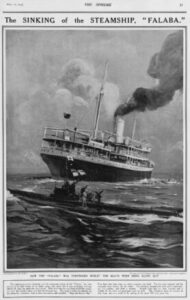 those on board five minutes to take to the boats. It would have been nothing short of a miracle if all the passengers and crew of a big liner had been able to take to their boats within the time allotted.”
those on board five minutes to take to the boats. It would have been nothing short of a miracle if all the passengers and crew of a big liner had been able to take to their boats within the time allotted.”
The sinking of RMS Falaba, and Thrasher’s subsequent death, was mentioned again in a memorandum sent by the US government, which was drafted by President Woodrow Wilson himself and addressed to the German government after the German submarine attack on the British passenger ship Lusitania on May 7, 1915, in which 1,201 people were drowned, including 128 Americans. President Wilson’s note was clearly a warning, calling for the US and Germany to come to a full and complete understanding as to the grave situation which had resulted from the German policy of unrestricted submarine warfare. In response to the warning, Germany abandoned the policy shortly thereafter. However, the policy abandonment was reversed in early 1917, and that was the final straw that put the United States into World War I on April 6, 1917.
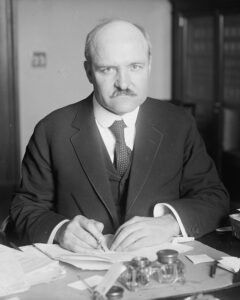 No matter what your opinion is on the use of Daylight Savings Time and Standard Time, the was originally a good reason for it, and that reason still applies today in many ways. The Standard Time Act of 1918, which was also known as the Calder Act (after the senator who sponsored the bill…William M. Calder), was the first United States federal law implementing Standard time and Daylight Saving Time in the United States. Prior to the Calder Act, the railroads had instituted time zones so that the rail schedule could have much needed consistency. Before time zones, no one had any idea when the train was due. It was a big mess. The Time Zone system defined five time zones for the United States and authorized the Interstate Commerce Commission to define the limits of each time zone.
No matter what your opinion is on the use of Daylight Savings Time and Standard Time, the was originally a good reason for it, and that reason still applies today in many ways. The Standard Time Act of 1918, which was also known as the Calder Act (after the senator who sponsored the bill…William M. Calder), was the first United States federal law implementing Standard time and Daylight Saving Time in the United States. Prior to the Calder Act, the railroads had instituted time zones so that the rail schedule could have much needed consistency. Before time zones, no one had any idea when the train was due. It was a big mess. The Time Zone system defined five time zones for the United States and authorized the Interstate Commerce Commission to define the limits of each time zone.
When the need for Daylight Savings Time came up, the original point of it was to save fuel by setting working hours so they coincided with the hours of natural daylight. While many people may not like that much, I think that a sensible person  can at least see the purpose of it. The act included a section that talked about the repeal of the change in one year, but in the end, it was decided that it was necessary to continue the practice. In fact, they could see no usefulness in repealing it, because the fuel savings had not changed. So, the practice has continued to this day. The Calder Act came about in answer to the European countries, who were already using the practice successfully.
can at least see the purpose of it. The act included a section that talked about the repeal of the change in one year, but in the end, it was decided that it was necessary to continue the practice. In fact, they could see no usefulness in repealing it, because the fuel savings had not changed. So, the practice has continued to this day. The Calder Act came about in answer to the European countries, who were already using the practice successfully.
Those who dislike the practice have been trying to repeal the act for as long as I can remember anyway, and with no success. I suppose that someday, they may succeed, but I’m not sure they will find that life without the time changes will be as amazing as they think. The sun will continue to make its  seasonal adjustments, and without the time changes, we will at some point, find ourselves wishing for another hour of daylight. The first time change to Daylight Saving Time took place on March 19, 1918, and it has been in practice since that time. I, personally, look forward to Daylight Saving Time every year. The longer days and more light make me feel happy, and I find that the few days or a week of adjustment is of little consequence in the grand scheme of things. Nevertheless, I’m sure I’ll hear lots of differing opinions from my readers. This year, Daylight Saving Time started on March 12, and Standard Time will begin on November 5…just so you know.
seasonal adjustments, and without the time changes, we will at some point, find ourselves wishing for another hour of daylight. The first time change to Daylight Saving Time took place on March 19, 1918, and it has been in practice since that time. I, personally, look forward to Daylight Saving Time every year. The longer days and more light make me feel happy, and I find that the few days or a week of adjustment is of little consequence in the grand scheme of things. Nevertheless, I’m sure I’ll hear lots of differing opinions from my readers. This year, Daylight Saving Time started on March 12, and Standard Time will begin on November 5…just so you know.
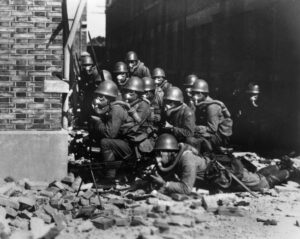 What would make a tiny nation try to invade a nation that is more that 25 times larger, with a population that is at least 8 times larger? It makes no sense, and yet on February 15, 1937, Japan attempted to invade China. Japan, with a total of 60,000 soldiers enter Northern China using planes and tanks. The invasion was something they had studied so they would have a plan before they attempted such an outlandish scheme. The type of conquest they were trying to mimic was that of Kubia Kahn, the Mongol emperor, who in 1271, established the Yuan dynasty and formally claimed orthodox succession from prior Chinese dynasties. The Yuan dynasty came to rule over most of present-day China, Mongolia, Korea, southern Siberia, and other adjacent areas. Kahn also amassed influence in the Middle East and Europe as khagan. By 1279, the Yuan conquest of the Song dynasty was completed, and Kahn became the first non-Han emperor to rule all of China proper.
What would make a tiny nation try to invade a nation that is more that 25 times larger, with a population that is at least 8 times larger? It makes no sense, and yet on February 15, 1937, Japan attempted to invade China. Japan, with a total of 60,000 soldiers enter Northern China using planes and tanks. The invasion was something they had studied so they would have a plan before they attempted such an outlandish scheme. The type of conquest they were trying to mimic was that of Kubia Kahn, the Mongol emperor, who in 1271, established the Yuan dynasty and formally claimed orthodox succession from prior Chinese dynasties. The Yuan dynasty came to rule over most of present-day China, Mongolia, Korea, southern Siberia, and other adjacent areas. Kahn also amassed influence in the Middle East and Europe as khagan. By 1279, the Yuan conquest of the Song dynasty was completed, and Kahn became the first non-Han emperor to rule all of China proper.
So, with dreams of power and world domination, among other things, including a need for the resources Japan lacked and China had, the Japanese army under Emperor Hirohito made the decision to attack the much larger 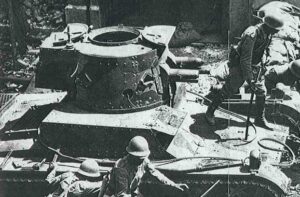 and more populated China. They threatened to bottle up 400,000 Chinese people on China’s central front. The attack area was approximately 20 miles, from the Yellow River to the Henan Capital provincial (Kaifeng). The Japanese Army displayed far superior air power and many more combat troops during the Japanese onslaught. In fact, their might could easily be called terrifying. China was helpless at stopping the Japanese forces from occupying Shanghai, and they were barely able prevent the invasion of Japan on the capital. The Chinese desperately tried to fight back with small caliber weapons against the heavy artillery fire power, air and naval might, and armored defenses of Japan. While they were severely outgunned, the bravery, stubbornness and determination of the Chinese made it possible for the country to withstand three months of defending Shanghai. Nevertheless, in the end, Shanghai fell, and Japan gained control over the city. The best of China’s troops were defeated. Still, the Japanese were surprised at the length of time that the Chinese troops were able to make a stand for their capital city. Because of their military superiority, the Japanese fully expected a short battle and a swift victory. They were not prepared for the one variable…the determination of the Chinese
and more populated China. They threatened to bottle up 400,000 Chinese people on China’s central front. The attack area was approximately 20 miles, from the Yellow River to the Henan Capital provincial (Kaifeng). The Japanese Army displayed far superior air power and many more combat troops during the Japanese onslaught. In fact, their might could easily be called terrifying. China was helpless at stopping the Japanese forces from occupying Shanghai, and they were barely able prevent the invasion of Japan on the capital. The Chinese desperately tried to fight back with small caliber weapons against the heavy artillery fire power, air and naval might, and armored defenses of Japan. While they were severely outgunned, the bravery, stubbornness and determination of the Chinese made it possible for the country to withstand three months of defending Shanghai. Nevertheless, in the end, Shanghai fell, and Japan gained control over the city. The best of China’s troops were defeated. Still, the Japanese were surprised at the length of time that the Chinese troops were able to make a stand for their capital city. Because of their military superiority, the Japanese fully expected a short battle and a swift victory. They were not prepared for the one variable…the determination of the Chinese 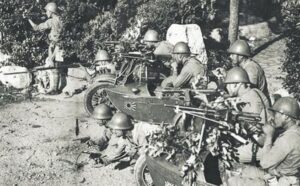 people. Morale plummeted over the heavy losses incurred, but not for long.
people. Morale plummeted over the heavy losses incurred, but not for long.
I sometimes wonder if these heads of governments really think that they can somehow control the world, or even, if they really think they can control the country they have invaded. The main reasons that nations and borders change as often as they do, is that people will only live under oppression for so long. Then, they will fight back. As to the heads of nations and ruling the world. While they might be the “head” of their nation, in a situation of world domination, I seriously doubt if any of these national leaders would be the one in control.
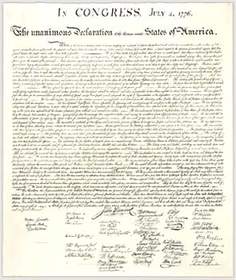
 When a country is fighting for recognition, one of the most important events is when other countries recognize your country as being an independent nation. It’s rather hard to conduct business with other nations, if you are viewed as a rouge or non-existent nation. That was the position the United States found themselves in right after the Declaration of Independence was adopted. Just because a country adopts its declaration of independence, doesn’t mean that it’s a done deal. That document can and has been the cause of major wars. The United States was no exception on the war end of that either. They fought long and hard to win that declared independence from Great Britain.
When a country is fighting for recognition, one of the most important events is when other countries recognize your country as being an independent nation. It’s rather hard to conduct business with other nations, if you are viewed as a rouge or non-existent nation. That was the position the United States found themselves in right after the Declaration of Independence was adopted. Just because a country adopts its declaration of independence, doesn’t mean that it’s a done deal. That document can and has been the cause of major wars. The United States was no exception on the war end of that either. They fought long and hard to win that declared independence from Great Britain.
Finally, the coveted recognition came when on December 17, 1777, the French foreign minister, Charles Gravier, count of Vergennes, officially acknowledged the United States as an independent nation. It came after news of the Continental Army’s overwhelming victory against the British General John Burgoyne at Saratoga. The victory gave Benjamin Franklin new leverage in his efforts to rally French support for the American rebels. Although the victory occurred in October, news did not reach France until December 4th. Remember that this mail system was worse than “snail mail” ever was. Messages had to be sent by ship across the ocean.
Benjamin Franklin had quickly mustered French support upon his arrival in December 1776. France’s humiliating loss of North America to the British in the Seven Years’ War made the French eager to see an American victory. Still, the French king worried about the consequences of backing “the rebels” openly. You can’t really blame him because an act like that could bring war to his own country. Still, he did back them in every other way. In May 1776, Louis XVI sent unofficial aid to the Continental forces and the playwright Pierre-Augustin Caron de Beaumarchais helped Franklin organize private assistance for the American cause.
Benjamin Franklin, who often wore a fur cap, captured the imagination of Parisians as an American man of nature and his well-known social charms stirred French passions for all things American. His personality made him the toast of Parisian society. He was very knowledgeable, and he had a way of enchanting groups of people 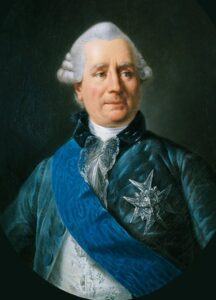
 with his wide-ranging knowledge, social graces, and witty conversation. Nevertheless, he was not allowed to appear at court, so any legal assistance he might have offered in the defense of the United States, was never heard.
with his wide-ranging knowledge, social graces, and witty conversation. Nevertheless, he was not allowed to appear at court, so any legal assistance he might have offered in the defense of the United States, was never heard.
Finally, with the impressive and long-awaited rebel victory at Saratoga, Louis XVI was convinced that the American rebels had some hope of defeating the British empire. His enthusiasm for the victory paired with French Foreign Minister Gravier’s concern that the loss of Philadelphia to the British would lead Congress to surrender, gave Franklin two influential allies with two powerful, albeit opposing reasons for officially backing the American cause, and so it was that a formal treaty of alliance with the United States followed on February 6, 1778.
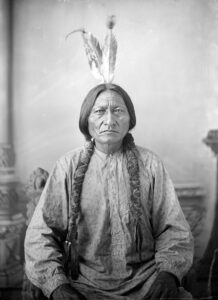 Sitting Bull was a Hunkpapa Lakota leader who led his people during years of resistance against United States government policies. The Hunkpapa Lakota is a branch of the Sioux tribe. Sitting Bull was a rather charismatic person, and people were willing to follow him because of it. He was a rather mysterious historical figure. He was not impulsive, nor was he calm. Sitting Bull had a strange personality. He was most serious when he seemed to be joking. He also possessed the power of sarcasm, and he used it to his advantage. These things are likely what made him a good leader for his people.
Sitting Bull was a Hunkpapa Lakota leader who led his people during years of resistance against United States government policies. The Hunkpapa Lakota is a branch of the Sioux tribe. Sitting Bull was a rather charismatic person, and people were willing to follow him because of it. He was a rather mysterious historical figure. He was not impulsive, nor was he calm. Sitting Bull had a strange personality. He was most serious when he seemed to be joking. He also possessed the power of sarcasm, and he used it to his advantage. These things are likely what made him a good leader for his people.
Sitting Bull was a man given to having visions, and before the Battle of the Little Bighorn, he had a vision in which he saw many soldiers, “as thick as grasshoppers,” falling upside down into the Lakota camp. The Hunkpapa Lakota people took the vision as a sign of a major victory in which many soldiers would be killed…and maybe it was. Just three weeks later, on June 25, 1876, the confederated Lakota tribes, along with the Northern Cheyenne tribe, defeated the 7th Cavalry under Lieutenant Colonel George Armstrong Custer, decimating Custer’s battalion. The battle and it’s timing seemed to bear out Sitting Bull’s prophetic vision. Again, Sitting Bull’s leadership inspired his people to 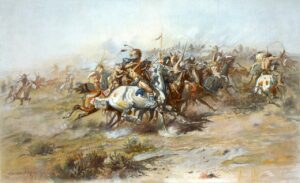 a major victory.
a major victory.
Of course, the United States government immediately sent thousands more soldiers to the area, in response to the battle. Any Indians who were in small groups or alone were a target, as were villages of peaceful Indians. Many were forced to surrender over the next year, but Sitting Bull refused to. In May 1877, he led his band north to Wood Mountain, North-West Territories, which is now Saskatchewan. Canada. Sitting Bull stayed in that area until 1881, at which time he and most of his band returned to US territory and surrendered to US forces.
Sitting Bull’s charismatic personality helped him out again when he went to work as a performer with Buffalo 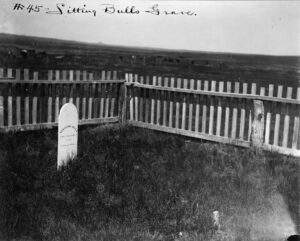 Bill’s Wild West show for a while, before returning to the Standing Rock Agency in South Dakota. That became one of the biggest mistakes Sitting Bull would ever make. Due to fears that he would use his influence to support the Ghost Dance movement, Indian Service agent James McLaughlin at Fort Yates ordered his arrest on December 15, 1890. Sitting Bull’s followers refused to go quietly, and in the struggle with police, Sitting Bull was shot in the side and head by Standing Rock policemen Lieutenant Bull Head and Red Tomahawk. His body was taken to nearby Fort Yates for burial. In 1953, his Lakota family exhumed what were believed to be his remains, reburying them near Mobridge, South Dakota, near his birthplace.
Bill’s Wild West show for a while, before returning to the Standing Rock Agency in South Dakota. That became one of the biggest mistakes Sitting Bull would ever make. Due to fears that he would use his influence to support the Ghost Dance movement, Indian Service agent James McLaughlin at Fort Yates ordered his arrest on December 15, 1890. Sitting Bull’s followers refused to go quietly, and in the struggle with police, Sitting Bull was shot in the side and head by Standing Rock policemen Lieutenant Bull Head and Red Tomahawk. His body was taken to nearby Fort Yates for burial. In 1953, his Lakota family exhumed what were believed to be his remains, reburying them near Mobridge, South Dakota, near his birthplace.
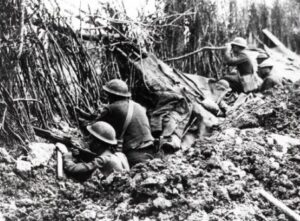
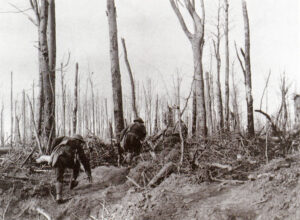 When I think of war and of the largest offensive in United States history, I don’t picture a battle in World War I. Nevertheless, I should. The Meuse–Argonne offensive, which was also called the Meuse River–Argonne Forest offensive, the Battles of the Meuse–Argonne, and the Meuse–Argonne campaign, depending on who you were, was a major part of the final Allied offensive of World War I that stretched along the entire Western Front. The offensive ran for a total of 47 days, from September 26, 1918, until the Armistice of November 11, 1918, and it was the largest in United States military history, past or present.
When I think of war and of the largest offensive in United States history, I don’t picture a battle in World War I. Nevertheless, I should. The Meuse–Argonne offensive, which was also called the Meuse River–Argonne Forest offensive, the Battles of the Meuse–Argonne, and the Meuse–Argonne campaign, depending on who you were, was a major part of the final Allied offensive of World War I that stretched along the entire Western Front. The offensive ran for a total of 47 days, from September 26, 1918, until the Armistice of November 11, 1918, and it was the largest in United States military history, past or present.
The offensive involved 1.2 million American soldiers, and as battles go, it is the second deadliest in American history. During the course of the battle, there were over 350,000 casualties including 28,000 German lives, 26,277 American lives, and an unknown number of French lives. The losses involving the United States were compounded by the inexperience of many of the troops, the tactics used during the early phases of the operation, and in no small way…the widespread onset of the global influenza outbreak called the “Spanish flu.” The 1918 Spanish Flu pandemic, also known as the Great Influenza epidemic, was an exceptionally deadly 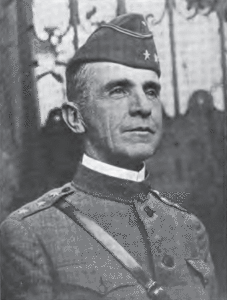
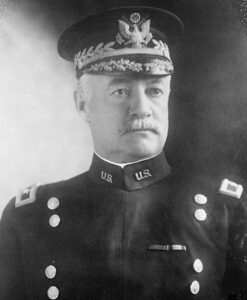 global influenza pandemic caused by the H1N1 influenza A virus. The pandemic affected an estimated 500 million people, or approximately a third of the global population. It is estimated that 17 to 50 million, and possibly as high as 100 million people lost their lives, which probably increased the deaths during the Meuse-Argonne offensive.
global influenza pandemic caused by the H1N1 influenza A virus. The pandemic affected an estimated 500 million people, or approximately a third of the global population. It is estimated that 17 to 50 million, and possibly as high as 100 million people lost their lives, which probably increased the deaths during the Meuse-Argonne offensive.
The Meuse–Argonne was the principal engagement of the American Expeditionary Force (AEF) during World War I, and it was what finally brought the war to an end. It was the largest and bloodiest operation of World War I for the AEF. Nevertheless, by October 31, the Americans had advanced 9.3 miles and had cleared the Argonne Forest. The French advanced 19 miles to the left of the Americans, reaching the Aisne River. The American forces split into two armies at this point. General Liggett led the First Army and advanced to the Carignan-Sedan-Mezieres Railroad. Lieutenant General Robert L Bullard led the Second Army and was directed to move eastward toward Metz. The two United States armies faced portions of 31 German divisions during this phase. The American troops captured German defenses at Buzancy, allowing French troops to cross the Aisne River. There, they rushed forward, capturing Le Chesne, also known as the Battle of Chesne (French: Bataille du Chesne).
In the final days, the French forces conquered the immediate objective, Sedan and its critical railroad hub in a 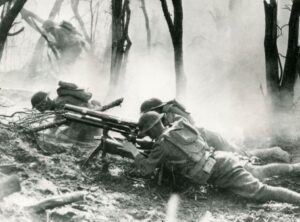

battle known as the Advance to the Meuse (French: Poussée vers la Meuse), and on November 6, American forces captured surrounding hills. On November 11, news of the German armistice put a sudden end to the fighting. That was fortunate for the armies, but for my 1st cousin twice removed, William Henry Davis, it was six days too late. He lost his life on November 5, 1918, on the west bank of the Meuse during these battles. He was just 30 years old at the time.
 You can fly near it, walk close to some fences, or zoom in from a far hill, but you cannot enter Menwith Hill Royal Air Force Station for any reason. Not unless you are an ECHELON spies and the NSA, that is. The station was founded in 1954, when the British War Office purchased 550 acres and leased them to the United States. The Cold War, a strange war that “raged” from March 12, 1947, to December 26, 1991, was in full swing when Menwith Hill was established. At the time, the station was used for spying and intelligence-gathering. Now that the Cold War is over, no one knows what goes on there. In fact, concern over the goings on is so high that there have been a large number of protests leading to politicians calling for more transparency about what goes on at Menwith Hill Royal Air Force Station. Many people think that Menwith Hill Royal Air Force Station, which is by far the most secretive piece of land in all of the United Kingdom, needs to be more transparent. Nevertheless, to this day, no one knows for sure what goes on in this military installation.
You can fly near it, walk close to some fences, or zoom in from a far hill, but you cannot enter Menwith Hill Royal Air Force Station for any reason. Not unless you are an ECHELON spies and the NSA, that is. The station was founded in 1954, when the British War Office purchased 550 acres and leased them to the United States. The Cold War, a strange war that “raged” from March 12, 1947, to December 26, 1991, was in full swing when Menwith Hill was established. At the time, the station was used for spying and intelligence-gathering. Now that the Cold War is over, no one knows what goes on there. In fact, concern over the goings on is so high that there have been a large number of protests leading to politicians calling for more transparency about what goes on at Menwith Hill Royal Air Force Station. Many people think that Menwith Hill Royal Air Force Station, which is by far the most secretive piece of land in all of the United Kingdom, needs to be more transparent. Nevertheless, to this day, no one knows for sure what goes on in this military installation.
RAF Menwith Hill is owned by the Ministry of Defence (MoD), but made available to the US Department of Defense (DoD) under the NATO Status of Forces Agreement 1951 and other, undisclosed agreements between the US and British governments. The site acts as a ground station for a number of satellites operated by the US National Reconnaissance Office, on behalf of the NSA, with antennae contained in numerous distinctive white radomes, locally referred to as “the golf balls,” and is alleged to be an element of the ECHELON system. The radomes are really a big part of what gives the installation its air of mystery.
Military installations have existed all over the world for hundreds of years, but not all of them are as secretive as Menwith Hill. It’s likely that we will never be privy to the things that go on there, and that may be a source of contention for years to come. I don’t know how I feel about the secrecy in military installations. In some ways I understand the need, but with secrecy, can come corrupt and dark schemes, as we saw during the Holocaust. Much depends on the integrity of the country, and even more importantly the integrity of the people in charge of the activities that go on there. Even with a country that is trying to do good, there can be evil people both working there, and in charge  of operations, and when evil people are allowed to operate in secrecy, the only logical outcome is disaster.
of operations, and when evil people are allowed to operate in secrecy, the only logical outcome is disaster.
RAF Menwith Hill is one of three main sites operated by the United States across the globe. It operates as a major satellite monitoring station and intelligence gathering location. The other two sites are located in America and Australia, having similar roles and working together with RAF Menwith Hill to develop knowledge around American, British, and Australian interests. The Australian site is known as the Joint Defence Facility Pine Gap. I wonder if operations at the other sites are as secret as they are at RAF Menwith Hill.
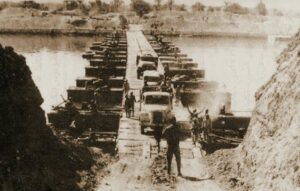
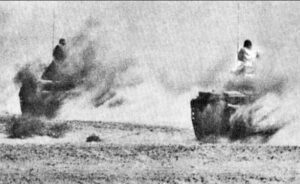 There has not been a time in my memory that was void of Middle East tensions, and perhaps there never been such a time since Biblical times. There have been many attempts and many negotiations trying to achieve Middle East peace, but none have ever really been successful. There have, however, been many wars, conflicts, and attacks on the countries of the Middle East, especially on Israel.
There has not been a time in my memory that was void of Middle East tensions, and perhaps there never been such a time since Biblical times. There have been many attempts and many negotiations trying to achieve Middle East peace, but none have ever really been successful. There have, however, been many wars, conflicts, and attacks on the countries of the Middle East, especially on Israel.
On October 6, 1973, in a surprise attack by Egyptian and Syrian forces on Israel, again threw the Middle East into turmoil. This particular attack threatened to bring the United States and the Soviet Union into direct conflict for the first time since the Cuban Missile Crisis in 1962. The United States and the Soviet Union had a tense relationship already, and although actual combat did not break out between the two nations, the events surrounding what became known as the Yom Kippur War seriously damaged United States-Soviet relations and all but destroyed then President Richard Nixon’s much publicized policy of détente (an end to hostilities).
Going into the war, Egypt and Syria, who were armed with the latest in Soviet weaponry, appeared to have the upper hand, and it looked like the two-front attack might bring victory to Egypt and Syria, who were looking to avenge themselves after their humiliating defeat in the Six-Day War of 1967. Nevertheless, Israeli counterattacks, aided by massive amounts of US military assistance, as well as disorganization among the Syrian and Egyptian forces turned the tide. The Israeli troops drove the Syrian troops back, and Syrians and seized the strategically important Golan Heights. The Israeli forces were even harder on the Egyptian army, forcing them to retreat back through the Sinai Desert, thousands of their troops were surrounded and cut off by the Israeli army.
As concerns deepened over the possibility of US-Soviet involvement in the conflict, Secretary of State Henry Kissinger, together with his Soviet counterparts, eventually arranged a shaky cease-fire. The Israeli troops had no intention of ending their siege of the Egyptian troops, who by this time were low on food and medicine, the Soviets threatened to take unilateral action to rescue them. This brought the situation close to the boiling point, and with tempers flared both in Washington and Moscow, the US military forces went to a Stage 3 alert. In case you didn’t know it, Stage 1 is war, so the volatile situation was about to explode. The threat of war with the US caused the Soviets to back down on their threat, but the damage to relations between the two nations was serious and would not be resolved for a long time, if ever. I’m still not sure that relationship is on anything but shaky ground.
Nevertheless, Kissinger worked feverishly to bring about a peace settlement between Israel, Syria, and Egypt. In what later became known as “shuttle diplomacy,” the secretary of state flew from nation to nation 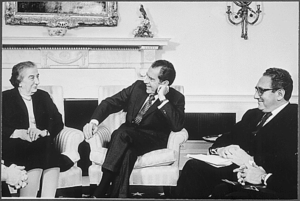
 hammering out the details of the peace accord. Finally, a little more comfortable with things, Israel began to withdraw its troops from some of their positions in both the Sinai and Syrian territory. For their part, Egypt promised to forego the use of force in its dealings with Israel. Syria only grudgingly accepted the peace plan, but they remained adamantly opposed to the existence of the Israeli state…a feeling that still exists among many Middle Eastern nations to this day.
hammering out the details of the peace accord. Finally, a little more comfortable with things, Israel began to withdraw its troops from some of their positions in both the Sinai and Syrian territory. For their part, Egypt promised to forego the use of force in its dealings with Israel. Syria only grudgingly accepted the peace plan, but they remained adamantly opposed to the existence of the Israeli state…a feeling that still exists among many Middle Eastern nations to this day.
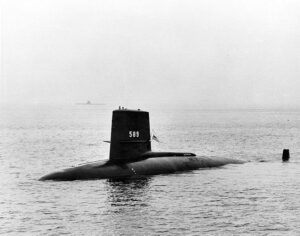
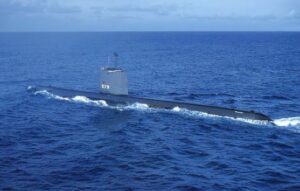 USS Scorpion (SSN-589) was a Skipjack-class nuclear-powered submarine that served in the United States Navy, and the sixth vessel, and second submarine, of the US Navy to carry that name. It was also the fourth nuclear powered submarine to mysteriously go missing in 1968. Scorpion was lost with all its crew, on May 22, 1968. Scorpion is one of two nuclear submarines the US Navy has lost, the other being USS Thresher. The other nuclear-powered submarines to go missing in 1968 at the height of the Cold War were Israeli submarine INS Dakar, the French submarine Minerve, and the Soviet submarine K-129. At the time Scorpion went missing when she was sent to surveil the Soviet submarine K-129, which had apparently already gone missing earlier in the year. The wreckage of USS Scorpion is still at the bottom of the North Atlantic Ocean…with all its armaments and nuclear engine.
USS Scorpion (SSN-589) was a Skipjack-class nuclear-powered submarine that served in the United States Navy, and the sixth vessel, and second submarine, of the US Navy to carry that name. It was also the fourth nuclear powered submarine to mysteriously go missing in 1968. Scorpion was lost with all its crew, on May 22, 1968. Scorpion is one of two nuclear submarines the US Navy has lost, the other being USS Thresher. The other nuclear-powered submarines to go missing in 1968 at the height of the Cold War were Israeli submarine INS Dakar, the French submarine Minerve, and the Soviet submarine K-129. At the time Scorpion went missing when she was sent to surveil the Soviet submarine K-129, which had apparently already gone missing earlier in the year. The wreckage of USS Scorpion is still at the bottom of the North Atlantic Ocean…with all its armaments and nuclear engine.
The Cold War is a term commonly used to refer to a period of geopolitical tension between the United States and the Soviet Union and their respective allies, the Western Bloc and the Eastern Bloc. The first phase of the Cold War began shortly after the end of World War II in 1945. The United States and its allies created the NATO military alliance in 1949 in the apprehension of a Soviet attack and termed their global policy against Soviet influence containment.
Following World War II, tensions were running high between world powers. It is thought that if there was ever a time when a real possibility of a nuclear attack existed, it was during the Cold War. This meant that countries were frantically looking for any advantage they could use to take over their competitors. One way to watch the other countries was to Surveil beneath the waves where they could be more hidden. This surveillance included the use of submarine crews. That, of course, explains the reason for mysterious disappearance of four subs from four different countries virtually at the same time.
The first disappearance was the INS Dakar from Israel, which went down just east of Crete on January 25, 1968. Dakar’s wreckage was found in 1991, but no official cause for the sinking was determined. Next, The French sub Minerve disappeared about an hour outside of Toulon on January 27, 1968. That wreckage was found in 2019, and it showed the hull had separated into three sections. When the French government made the decision to leave the wreck, any chance of answers was eliminated. The Soviet K-129 disappeared earlier in the year, so maybe USS Scorpion was looking for it. Nevertheless, on May 22, 1968, the disappearance conspiracy of 1968 was brought to a close, when USS Scorpion. The submarine would not be fount until October of 1968. The Navy looked into the disaster, but in the end the official court of inquiry said the cause of the loss could not be determined with certainty. Still, there are several theories on what might have happened. One centered around a malfunction of a torpedo. Others suspected poor maintenance may have been the culprit, citing the rushed overhaul.
That was the last report anyone heard about the submarine. After decades of research and investigation, the US Navy has never changed its report that a catastrophic event caused the sinking. Nevertheless, there are those who believe the Scorpion was taken out by the Soviets in retaliation for perceived attack on the K-129 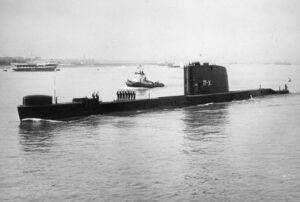
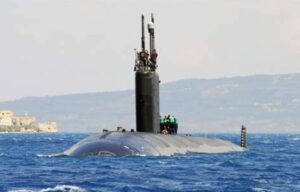 submarine earlier in the year. Neither country will admit or deny any direct action relating to the submarine sabotage, but something happened during the first half of 1968. Four nuclear-powered submarines, from four different countries just don’t start sinking for no reason, and yet, no reason was ever determined. They just sunk.
submarine earlier in the year. Neither country will admit or deny any direct action relating to the submarine sabotage, but something happened during the first half of 1968. Four nuclear-powered submarines, from four different countries just don’t start sinking for no reason, and yet, no reason was ever determined. They just sunk.

